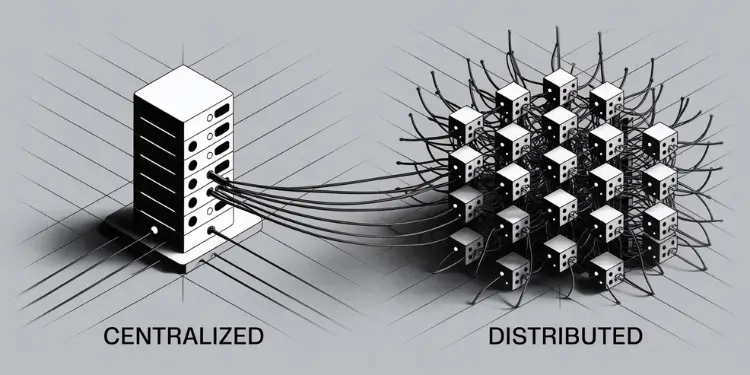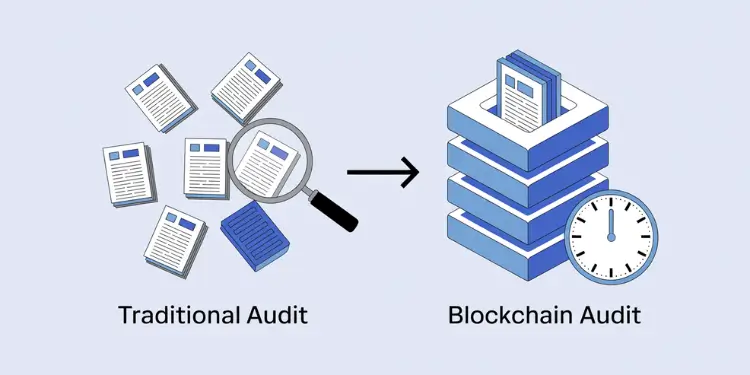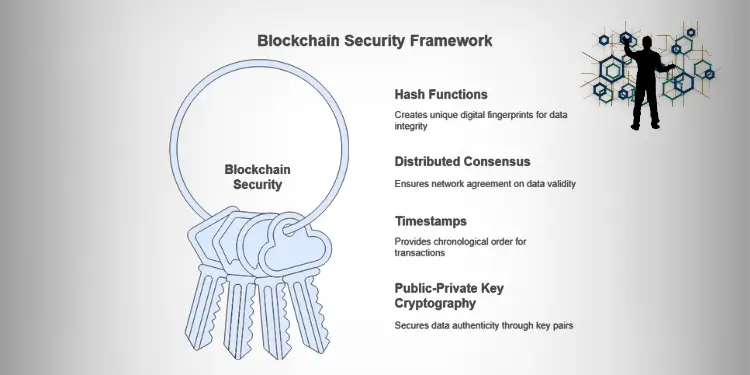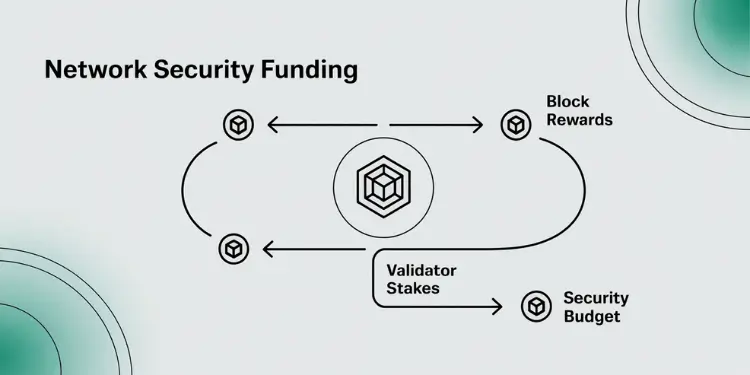The digital world has given us many ways to connect and do business. But can we really trust these systems without someone watching over them? Blockchain technology gives us a good answer.
Did you know 76% of leaders think their fields will fall behind if they don’t use distributed ledger tech? This tech has grown a lot from its start in 1991 as a way to keep digital data safe.
“Trust is the key to our digital future, and blockchain is the bank that never closes,” says digital economist Mariana Chen. This shows why this tech is important, not just for digital money.
When I first learned about blockchain in 2015, I saw its big chance to change how we connect online. Imagine a shared notebook where everyone can see what’s written, but nothing can be erased once it’s written.
The benefits of blockchain go way beyond just money. Its immutable nature builds trust without needing a central boss. All over the world, groups are looking into how it can change things like supply chains and voting systems.
Blockchain is a distributed ledger technology that records transactions in cryptographically linked blocks across a decentralized network. By replicating data on multiple nodes and enforcing consensus—using mechanisms such as proof-of-work or proof-of-stake—it eliminates single points of failure and ensures that once data is recorded it cannot be altered. Each block contains a timestamp, a hash of its contents, and the hash of the previous block, creating an immutable chain that secures integrity and authenticity without relying on a central authority.
The technology supports secure peer-to-peer transactions, transparent audit trails, and programmable logic through smart contracts. Permissionless public networks allow anyone with an internet connection to participate, expanding financial access and reducing counterparty risk. Beyond cryptocurrencies, blockchain’s combination of immutable records, consensus-driven validation, and native token incentives enables applications in supply chain tracking, digital identity management, cross-border payments, and automated contract execution.
- Blockchain creates trust through transparency and consensus
- The technology enables secure peer-to-peer transactions without intermediaries
- Its applications extend far beyond cryptocurrencies into numerous industries
- Understanding blockchain fundamentals helps navigate our evolving digital landscape
Decentralization removes single point failures
Blockchain is different from old systems because it’s not controlled by one place. When I went abroad last year, my bank froze my money without telling me. But my blockchain wallet was safe and easy to use.
Old banks have one main server that can fail or get hacked. This means millions of people can’t get their money. Blockchain fixes this by spreading data across many computers worldwide.
Imagine all your photos on one drive. If it breaks, you lose everything. But if they’re on many devices, losing one won’t hurt you. This is why blockchain is hard to attack or stop.

Distributed Ledger Ensures Consensus Integrity
The core of blockchain is like many accountants checking each other. In my workshops, we pass a ledger around. Each person checks the last entry before adding their own.
This way, no one can change records without everyone agreeing. When someone tries to add a transaction, many nodes must say it’s okay. This keeps the ledger honest.
Complete blockchains combine five design elements—encryption, immutability, tokenization, decentralization, and distribution—to ensure transaction authenticity and tamper resistance.Ref.: “Gartner, Inc. (2021). Blockchain Today and Tomorrow: A Quick Guide. Gartner.” [!]
This system is very secure. Even if some nodes fail or cheat, the majority keeps the blockchain safe. This is something old systems can’t do, no matter how much they spend on security.
“Blockchain doesn’t just improve security—it fundamentally changes the security model by removing the need to trust any single authority.”
Permissionless Access Widens Global Participation
Public blockchain networks are open to anyone with internet. This is very different from old banks that need lots of checks and physical visits.
Globally, 1.7 billion adults remain unbanked, yet two-thirds of them own a mobile phone that could help them access financial services via blockchain solutions.Ref.: “World Bank (2018). Financial Inclusion on the Rise, But Gaps Remain. The World Bank.” [!]
This openness helps the 1.7 billion adults without bank accounts. They can start using cryptocurrency without needing permission. I’ve seen this in my classes in poor areas.

Think of three services you use that need a middleman. Now imagine doing them directly with others. That’s what blockchain offers.
Blockchain’s open design also lets developers work fast. They can make new financial tools without needing approval. This leads to a lot of new ideas and services.
Immutable records strengthen audit reliability

Data on the blockchain is special. It’s permanent and can’t be changed. This makes auditors very happy.
Blockchain is like a “write-once, read-forever” system. Unlike regular databases, blockchain’s records can’t be edited or deleted easily. They stay the same for everyone to see.
The global blockchain technology in healthcare market was valued at USD 7.04 billion in 2023 and is projected to grow at a CAGR of 63.3 percent from 2024 to 2030, demonstrating its impact on optimizing data integrity and patient record management.Ref.: “CTO Magazine Editorial Team (2024). Future of Blockchain Technology in 2025 and Beyond. CTO Magazine.” [!]
Last year, I helped a company use blockchain for tracking products. Their audits went from days to minutes. This was because the data was reliable by design.
The true value of blockchain isn’t that it stores information—it’s that it stores information in a way that makes unauthorized changes mathematically impossible.
Cryptographic Chaining Prevents Data Alteration
Blockchain’s magic is in its chaining mechanism. Each block has data and a special code (hash) of the last block. This creates a strong chain of info.
In my class, I use paper clips to show this. If you try to change a clip, the whole chain breaks. This helps people see why blockchain’s data can’t be tampered with.

Blockchain uses special algorithms for security. These include:
- Hash functions for unique digital fingerprints
- Distributed consensus for network agreement
- Timestamps for order
- Public-private key cryptography for authenticity
Blockchain’s security is very different from old systems. It’s not just tech—it’s a big change in how we trust information.
| Feature | Traditional Database | Blockchain Records | Real-World Impact |
|---|---|---|---|
| Change Control | Administrator permissions | Mathematical impossibility | Eliminates insider threats |
| Audit Trail | Separate logs (if enabled) | Built into core structure | Reduces verification costs |
| Trust Model | Trust in administrators | Trust in cryptography | Removes human gatekeepers |
| Data Recovery | Backup-dependent | Distributed across network | Improves disaster resilience |
Blockchain helps solve a big problem: keeping records that can be trusted. Auditors see what must have happened with blockchain’s proof.
This is great for many fields. Financial services, healthcare, and supply chains all get a reliable source of truth. They don’t have to trust one person.
When a document is only on one computer, it’s hard to trust. But blockchain asks a new question: “how can we ensure nobody controls this data?” This is blockchain’s big change for digital trust.
Read More:
Token incentives align decentralized governance
Blockchain is smart because it uses money to keep things right. Imagine a place where guards get paid if the vault stays safe. This shows how tokens keep things working without a boss.
Bitcoin and Ethereum use people’s good behavior to stay safe. They make it better to be honest than to cheat. This is a big win for digital rules.

Native Assets Fund Network Security
Cryptocurrencies do two things: they help with money and keep things safe. Bitcoin, for example, helps with both. When you send bitcoin, a bit of it helps keep the network safe.
This is a new way to keep things safe, unlike old money ways. The bitcoin network pays for its own safety with its own money. In a workshop, I used chips to show how this works. Students loved it.
The security budget of the Bitcoin blockchain is directly proportional to the value of its native asset, creating an economic fortress that strengthens as adoption increases.
As bitcoin’s value goes up, so does the reason to keep it safe. This makes the network even safer. The money in the network grows as more people use it.
Check Out: History of blockchain technology evolution“
Staking Rewards Encourage Honest Validation
Ethereum is different from Bitcoin. It uses a new way to keep things safe. People put up money to help keep things right.
This makes people want to be honest. If they cheat, they lose their money. I’ve shown this with poker chips in class. It’s amazing how quickly people start to be honest.
Ethereum’s system is special. People need to put up a lot of money to help keep things safe. This makes them want to keep things honest, because losing money is a big deal.
This is a big change. Security used to cost money. Now, it makes money. This makes more people want to help keep things safe.
Before we talk about smart contracts, think about this. What if your bank paid you for helping keep it safe? That’s what cryptocurrencies do.
“Learn More About: How does blockchain work beginners guide“
Smart contracts automate trustless execution
Smart contracts are a big deal in blockchain. They work like vending machines. You put in the right conditions, and they do what you want without needing a person.
Smart contracts are like digital agreements. They live on blockchain platforms. When certain conditions are met, they do what the code says. This means you don’t need to trust others like you do with regular contracts.
Regulatory frameworks for tokenized assets and blockchain-based transactions are still emerging, which may delay enterprise-grade smart contract deployment.Ref.: “Deloitte Insights (2025). The Race Is On: Building Tokenization Solutions for Real-Time Payments. Deloitte.” [!]
I’ve helped small business owners use smart contracts. They make sure payment happens when goods are delivered. This has saved them a lot of time and trouble.
Code is law in the world of smart contracts. The agreement isn’t subject to interpretation – it executes precisely as written, without discretion or bias.
Smart contracts are powerful because they create trustless environments. You don’t have to trust the other side because the blockchain makes sure things happen as agreed. This makes business processes smoother.
I show people how smart contracts work with a simple example. Imagine a $5 envelope with a math puzzle to solve. Smart contracts are like that but with digital stuff and more rules.
| Traditional Contracts | Smart Contracts | Benefit |
|---|---|---|
| Require trust between parties | Trust in code, not counterparties | Reduced counterparty risk |
| Manual enforcement | Automatic execution | Lower administrative costs |
| Potential for interpretation | Exact execution as coded | Elimination of disputes |
| Intermediaries required | Direct peer-to-peer interaction | Reduced fees and delays |
Smart contracts have many uses. They can pay out insurance when flights are late. They can also check if goods are delivered right before paying.
- Corporate bond transfers that execute automatically at maturity
- Supply chain transparency with automatic payment upon verified delivery
- Travel insurance that pays instantly when conditions are met
- Property transfers that complete when funds are verified
- Voting systems that ensure one-person-one-vote integrity
More and more businesses are using smart contracts. They make things faster and cheaper by cutting out middlemen. This makes transactions safer too.
Smart contracts can help in many areas. They’re good for finance, healthcare, and even entertainment. Any process that needs checking and doing can use them.
Think of a time when you had to trust someone else. How could a smart contract help? Write down your idea and think about what rules it would need.
Check out the below:
Borderless payments lower transaction overhead
The global payment system has been slow and expensive for a long time. Traditional systems like SWIFT can take days and cost a lot. Blockchain makes transfers fast and cheap, settling in minutes for just a few cents.
When banks use blockchain, they save a lot of money. They cut out the need for expensive banking relationships. This new tech also makes it easier to move money around.
“Dive Deeper: How to start blockchain career and break into the industry successfully“
Micro Remittances Reach Unbanked Populations
Blockchain is amazing for sending small amounts of money. Before, it was too expensive. Now, even $2 can be sent to someone’s phone.
For the 1.7 billion people without bank accounts, blockchain is a game-changer. It lets them use financial services without needing a bank. It’s also changing how businesses manage their supply chains, making everything more transparent.
Blockchain is changing how we move money around the world. Every new block is a step towards a fairer financial system. It’s helping developers create tools for those left out of global trade.











